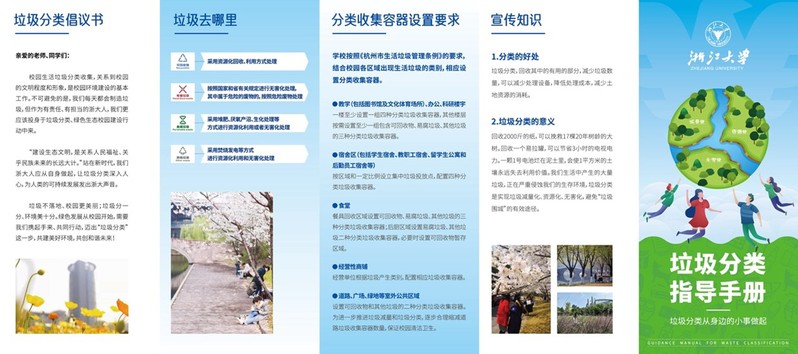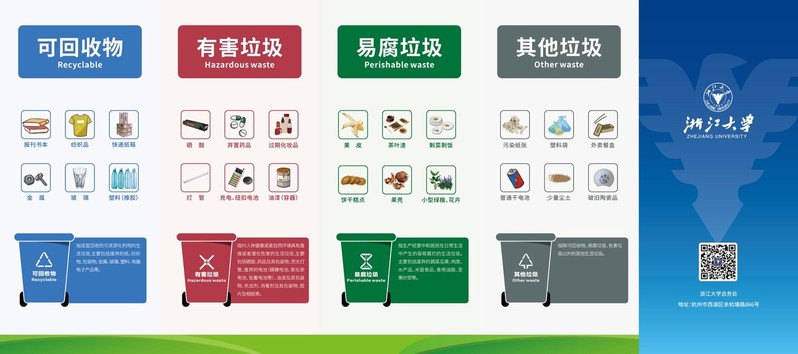'Recycling Right' Action
2022-01-30
To minimize waste across the campus and raise the awareness of turning waste into treasure, a helpful handbook of guidance on waste management is distributed among all the ZJUers.


Where did the garbage go?
Approaches for clearing municipal life garbage are mainly sanitary landfill, high-temperature composting and incineration, etc. However, with the population gathering, the garbage amount is increasing, and traditional treatment methods has brought many problems.
- Harmful gas “dioxin” will be produced in the burning process of garbage, which poses a great threat to environmental safety and human health.
- Although landfilling garbage can help deal with all varieties of garbage, it takes up a mass of land, and also produces severe secondary pollution. For example, the garbage exudate will pollute groundwater and soil, and the odor generated by stacked garbage will seriously affect the air quality around the site. What’s more, stacked garbage contains a large number of bacteria and viruses, and there are hidden dangers such as heavy metal pollution from biogas.
- The methane gas produced by garbage fermentation is not only a hidden danger of fire and explosion, but also a greenhouse gas which is harmful to the world.
Why we need ‘Recycling Right’?
- Garbage classification screens out recyclable and non-degradable substances from the source, reducing the amount of waste by more than 60%, so as to reduce the harm caused by traditional waste management.
- Garbage classification can effectively save primary resources, improve environmental quality, drive green development and lead a green life.
- Through garbage classification and collection, useful materials, such as paper, plastic, rubber, glass, bottles, metals and old household appliances are separated from the garbage and put into the sorting bins separately. Recycle, reuse, and turn waste into treasure.